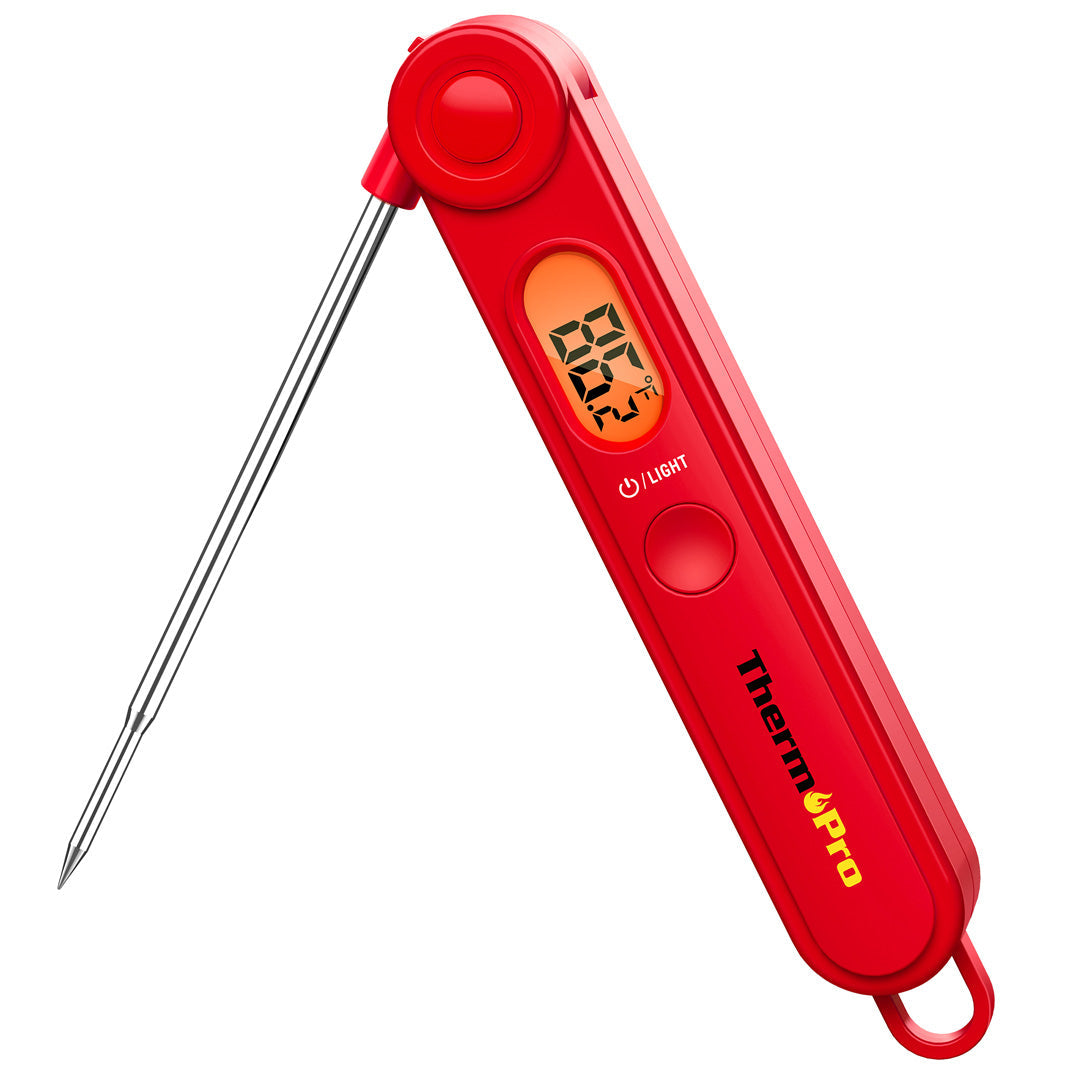Although making candy is an art form, it requires some science to develop the chemical reaction that you need to get a chewy caramel or a translucent lollipop. Candy thermometers are used to check candy temperature so that you can ensure that the sugar has reached the correct stage for your recipe. Instant-read sugar thermometers take the guesswork out of making candy. They are easy to read and have a fast reaction time, helping novice cooks and expert confectioners make perfect treats every time.
Sugar Thermometers: The Basics
To make many candies, including toffee and hard candy, you’ll heat a solution of sugar and water. As the water evaporates, the sugar becomes more concentrated. The temperature that the sugar reaches while it’s heated predicts the texture of the candy once it cools. To cool sugar syrup quickly, you can drop a ball of it into cold water. It will end up with a different level of firmness depending on the stage it reached while cooking.

A candy thermometer can tell you what stage the sugar syrup is in so that you don’t have to guess. The different sugar stages are:
-
Thread stage – Sugar reaches 230 to 235 degrees when heated. When cooled, it forms a syrupy thread that can be poured over desserts.
-
Soft-ball stage – Sugar reaches 235 to 240 degrees when heated. When cooled, it forms a soft, collapsible ball that is ideal for making fudge, fondant, and pralines.
-
Firm-ball stage – Sugar reaches 245 to 250 degrees when heated. When cooled, it forms a stiff ball that can be shaped by squeezing it to make goodies such as caramels.
-
Hard-ball stage – Sugar reaches 250 to 265 degrees when heated. When cooled, it forms a rigid ball. Rock candy, nougat, gummies, and marshmallows are cooked to this stage.
-
Soft-crack stage – Sugar reaches 270 to 290 degrees when heated. When cooled, it develops flexible threads that bend somewhat before they break. This stage is used to make butterscotch and saltwater taffy.
-
Hard-crack stage – Sugar reaches 300 to 310 degrees when heated. When cooled, it becomes brittle enough to make toffee, brittles, and lollipops.
Beyond these stages, sugar can be cooked into a caramelized liquid. The water boils away, and the sugar develops a richer flavor. It’s essential to use a candy thermometer during these stages so that you don’t burn the solution.
A candy thermometer must be able to withstand temperatures up to 350 or 400 degrees Fahrenheit. It also needs to be precise. If you hit a final temperature that’s 5 degrees off from what you intended, you may end up with a different type of candy that you planned to make.
What Is The Best Candy Thermometer?
A traditional candy thermometer is made with a glass pipe within a metal frame. These thermometers clip onto the side of the pot, which seems convenient. However, they can only read the temperature at one spot unless you remove the clip and move them around. That can be hard to do when you’re also trying to gauge the sugar temperature and react quickly.

The older thermometer style takes some time to come to temperature. By the time it displays the accurate temperature, the sugar may have surpassed the stage at which you needed to work with it.
ThermoPro food thermometers use advanced technology to deliver the best features of a candy thermometer.
Anyone who has tried to make candy can tell you that it’s frustrating when you anticipate chewy caramels and come away with tooth-cracking morsels. ThermoPro meat thermometers have a temperature accuracy of ±0.9 degrees Fahrenheit, allowing you to work with sugar without worrying about overcooking or undercooking it.
Sugar can heat up rapidly. Your thermometer needs to keep up with the cooking rate. The ThermoPro+ TP18 uses a thermocouple sensor to reflect an accurate reading within three seconds of immersion.
Any crumbs or grains that make their way into your sugar syrup can transform the entire batch from a sleek, smooth concoction into a gritty mess. The sugar crystals grab onto crevices, sharp edges and particles, crystallizing the whole batch.
The smooth surface of a ThermoPro meat thermometer prevents this from happening. You can quickly wipe off the probe every time you remove it from the solution, and you don’t have to worry about debris making its way into small scratches or dents in the thermometer’s exterior.
Most stoves don’t heat evenly. Even if they do, a viscous solution will retain hot spots. Clip-on thermometers only display a localized temperature. ThermoPro meat thermometers can be placed in any area of the solution. They’re also strong enough to be used to stir the pot, helping you get an accurate reading.
How To Use A Candy Thermometer

A candy thermometer shouldn’t be hard to use. Because sugar can burn easily, you’ll need to work quickly. You don’t want to spend so much time fiddling with the thermometer that you can’t pay attention to the sugar solution.
Turn the thermometer on by pressing the power button. Make sure that the probe is locked in the extended position if you’re using a foldable thermometer. Insert the probe into the solution, and give it a quick stir. When the reading stabilizes at the desired temperature, remove the thermometer, wipe it off, and continue to follow your recipe.
Die-hard candy makers recommend testing a thermometer for accuracy every time you plan to use it. To do this, place your thermometer in a pot of boiling water. We know that water boils at 212 degrees Fahrenheit at sea level. Therefore, your thermometer should display a temperature of 212 degrees in the boiling water.
If it’s higher or lower, take the difference into account when following your recipe. For example, if your thermometer read 210 when the water was boiling, you’ll need to subtract two degrees from the temperatures in your recipes.
Making candy is a notoriously finicky process. If you haven’t been successful with the process up until now, it might not be you. Upgrade your candy thermometer to streamline the process.






 288 Comments
288 Comments




























